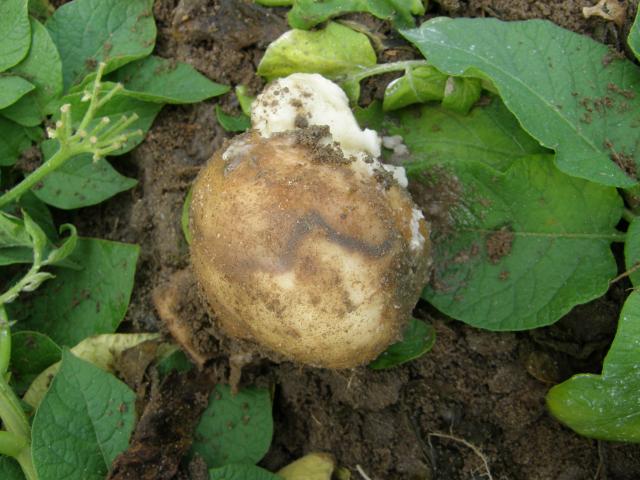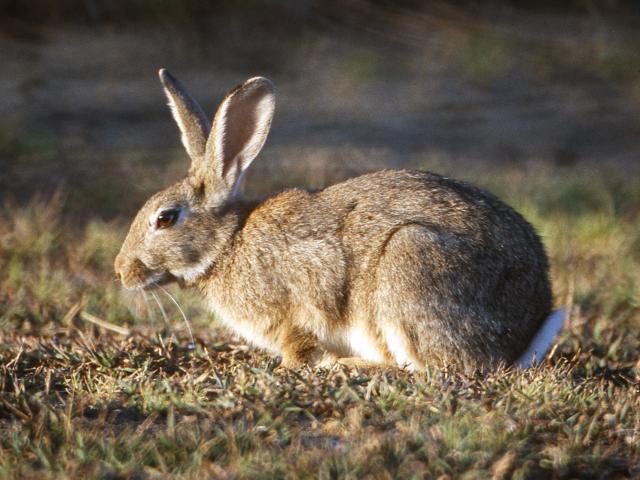Welcome to the new AgMemo
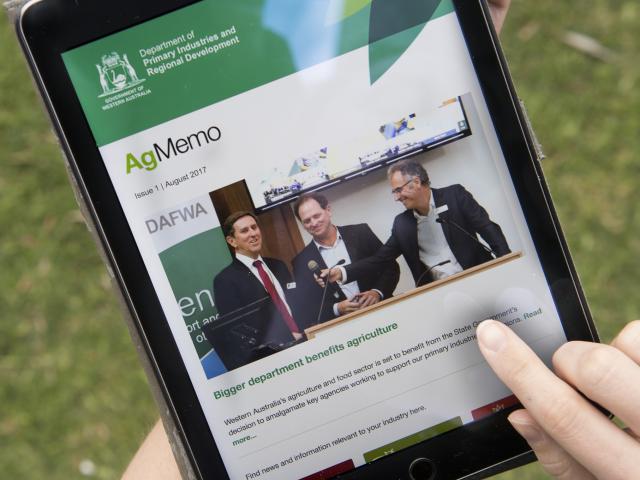
The AgMemo team has been busy reviewing how we can improve the way we deliver our news to you.
We’ve made some changes which we hope will enhance your reading experience.
Welcome to the first edition of the new AgMemo.
AgMemo, a history
The first edition of the Agricultural Memo was published in 1963 as the brainchild of Jim Doyle, a young advisor faced with the problem of contacting farmers in a time of no radio and poor telephone service, leaving mail as the only reliable method.
After an enthusiastic acceptance by farmers in the Esperance district, the concept of AgMemo was quickly adopted by other district offices.
Initially the memo was published as a folded foolscap sheet, printed on both sides and produced monthly within district offices.
In 2012, it was modernised to an online publication, which provided readers with access to a greater pool of information through links to other webpages and online publications.
After 54 years, the newsletter remains a key way of staying in touch with Western Australian farmers and its longevity is testimony to its value.
Throughout this time, AgMemo’s general objective has remained unchanged – to keep our readers up to date with the department’s activities as well as provide timely, relevant and useful information to assist development of the agrifood sector.
What has changed?
In a bid to improve the way we deliver our news to subscribers we have changed the focus of AgMemo from regions to industries.
The main body of the newsletter will promote the department’s activities and provide timely and seasonal information that is relevant to the majority of subscribers across WA.
From this main page, you can select a business area (grains, livestock or horticulture) using the industry icons (pictured below, note you must be subcribed to see these) or from the 'See Also' section on the right hand side of this page.
These links will take you to a snapshot of some of the latest news and seasonal advice relevant to your business.
Another new feature will be a regular section listing funding and scholarships available to the agrifood sector and events hosted or supported by the department.
This feature can be found in the main section of the newsletter, sent to your inbox and housed on the AgMemo homepage on our website.
AgMemo will continue to focus on agriculture and food, but as part of the broader Department of Primary industries and regional Development, we will be able to bring you relevant news from other parts of the department.
The newsletter will be published every two months as an e-newsletter sent directly via email.
The AgMemo team welcome feedback and ideas from subscribers highlighting current issues and topics they would like to see published.
Please use the feedback icon at the bottom of the newsletter to contact us or mail directly to agmemo@dpird.wa.gov.au.
Big year of activity with agriculture budget
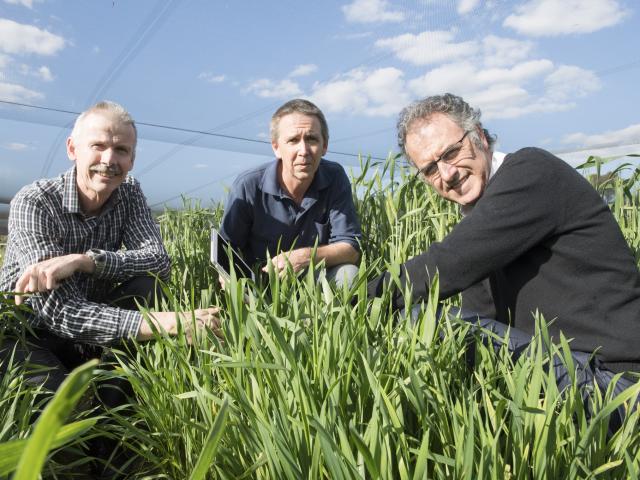
The State Budget has just been handed down and Deputy Director General Mark Sweetingham gives an overview of what this means for the department.
The State Government is looking to the Department of Primary Industries and Regional Development to grow the Western Australian agribusiness sector and regional economies.
In the department’s budget for 2017/18, more than $250 million has been committed to deliver agriculture and food activities and services, including contributions from external revenue sources.
With an increase of about $10 million on the previous year’s spend, our focus is on building the department’s core capacity and targeting investment to expand the value of the sector and protect its world class reputation and market access.
This approach recognises the need to diversify the state’s economy and capitalise on the sector’s growth potential, increase its economic contribution and drive new employment opportunities – especially in the regions.
Biosecurity
There will be greater investment in safeguarding WA’s biosecurity standing to ensure we can continue to access lucrative international markets. The department will provide biosecurity and product integrity services totalling more than $80 million in 2017/18.
The department will focus on building capacity across the sector to deal with increasing biosecurity threats to agriculture.
This includes strengthening biosecurity surveillance and emergency response capability, a need highlighted by recent incursions of tomato potato psyllid and Dickeya dianthicola and the impacts on our horticulture industries.
Research and development
Rebuilding the state’s agricultural science, research and development capabilities is a priority for the Government.
The department is supporting this commitment by pursuing potential research structures and collaboration arrangements that jointly meet the needs of WA’s universities and industry.
This is being applied to grains research, with renewed support for a new model bringing together government, tertiary and private sector research investment and a more collaborative approach.
Increasing research capacity will help ensure our grains sector continues to be internationally competitive.
Animal welfare
The State Government is committed to making significant and long-term improvements to animal welfare in Western Australia in 2017/18.
Funds will continue to be directed to implementing key recommendations of the Easton review of the State’s investment in and administration of the Animal Welfare Act 2002.
This includes developing a comprehensive strategic plan for animal welfare in Western Australia and commencing a review of the Act.
Key projects and developments
A number of Royalties for Regions-funded agriculture projects are continuing in 2017/18 with a total investment of $46 million. Key projects include:
Boosting Biosecurity Defences – focussed on early detection of declared pests and diseases, and preparedness to respond to incursions, community engagement and new technology. The project will conclude in June 2018.
Asian Market Success – provides WA agrifood businesses with key resources and grants combined with in-market business support and capability development programs to become more internationally competitive.
Food Industry Innovation – identifies new and emerging premium food and beverage products and provides WA food businesses seeking growth with access to targeted resources and information about domestic and international market opportunities.
eConnected Grainbelt – focused on digital connectivity, demonstrating the potential to increase productivity using digital decision-making tools, enhancing capacity to share data to improve on-farm decisions, building the case for ‘to-farm’ connectivity and demonstrating ‘on-farm’ connectivity solutions.
Northern Beef Futures – explores new market and supply chain options for the WA beef industry. The project has provided business improvement grants and seed funding to support studies for new infrastructure in the Kimberley and Pilbara. Mosaic agriculture and sterile leucaena trials in the north and integrated supply chain options will continue this year.
Sheep Industry Business Innovation – aims to increase the value of the WA sheep meat industry through a whole of supply chain approach. This includes improving productivity through genetic selection, reproductive rates and labour saving technologies, as well as improving supply chain systems dedicated to export markets.
Agricultural Sciences Research and Development Fund – provides grants to support industry-driven R&D projects to boost agricultural productivity and increase international competitiveness, helping to create new employment opportunities.
Boosting Grains Research and Development – through targeted grains R&D, the project aims to boost on-farm grain productivity and profitability for growers to capitalise on premium Asian and Middle Eastern markets and re-energise future R&D capability within WA.
Across the new department
As a broader, more collaborative department, we are able to deliver improved services to benefit primary producers and businesses across the state.
The Government’s $1 million funding commitment to establish a new fish health laboratory at Watermans is a prime example where we are boosting our capacity to improve services to benefit the state’s aquaculture industry.
Other aquaculture initiatives of interest to AgMemo readers include the new declaration of the Mid West Aquaculture Development Zone near the Abrolhos Islands, ongoing construction of a multi-species mollusc hatchery in Albany, and planning to identify a south coast aquaculture zone with a focus on shellfish.
Across the new department, we have much to achieve and are well positioned to make a greater contribution to regional growth and economic diversification across the state.
Continued response to major biosecurity incidents
The Department of Primary Industries and Regional Development is continuing to dedicate efforts to two biosecurity incidents – the Tomato potato psyllid (TPP) pest and Dickeya dianthicola bacterium – which are having significant impacts on industry.
Tomato potato psyllid
First discovered in Western Australia in February this year, TPP is a plant pest which feeds on tomato, potato, capsicum, chilli, goji berry, tamarillo, eggplant and sweet potato, leading to a loss of plant vigour and yield.
TPP can also carry a bacterium called Candidatus Liberibacter solanaceum (CLso) which is associated with the ‘zebra chip’ potato disease.
Agreement has been reached by federal and state governments and the horticulture industry on a national plan to manage and limit the impact of the TPP/CLso complex.
The transition to management plan continues through to mid-May 2018, and is led by the department with support from affected industries, and federal and state governments.
Surveillance will target areas where there are known populations of TPP during Spring 2017 through to Autumn 2018, when insect activity is expected to be at its peak.
The aim of surveillance is to reach a high level of confidence regarding the presence or absence of CLso.
The TPP transition to management team will provide further details to commercial growers and home gardeners about how they can assist trapping psyllids.
The department will also lead research work including examining chemical control options, post-harvest disinfestation trials, and assessing biological control options using predator species.
Working closely with TPP-affected industries in WA, the department will develop enterprise management plans to help minimise the spread and impact of the pest on-farm through to post farm gate.
Following the National Management Group’s decision in April that it is not technically feasible to eradicate the pest in Western Australia, department staff have continued to work with local and national industry bodies, and other jurisdictions, to facilitate interstate trade.
Dickeya dianthicola
In June, the Dickeya dianthicola bacterium was detected in Australia for the first time on a Western Australian potato growing property.
The bacterium has a wide host range and can also affect other horticultural crops including some ornamental flowers (such as dahlia, freesias and carnations), globe artichoke and chicory.
Dickeya dianthicola can lead to significant yield loss.
Disease symptoms in potatoes include blackleg, aerial stem rot and tuber soft rot.
Slimy, wet black stems is a characteristic symptom. In ornamental crops, symptoms include wilting and poor plant growth.
Although in some instances plants and tubers may not show any signs of infection.
The discovery of Dickeya dianthicola triggered a national incident response led by the department, which has since conducted extensive surveillance, sampling and testing to determine the extent of the outbreak, and to also determine the pathway through which the bacteria entered WA.
Investigations have led to the discovery that infected dormant dahlia tubers grown on a potato growing property are the likely source of infection.
These dahlia tubers originated from the eastern states, and in WA were grown prior to the planting of a potato crop in the same plot.
Other states have commenced surveillance and testing of both potato and dahlia crops for Dickeya dianthicola.
In Western Australia the bacterium has been confirmed on four commercial potato growing properties in two potato varieties.
It was detected in potatoes on three of these properties, which have been quarantined.
Throughout the incident the department has made every effort to work closely with quarantined growers to determine how they can continue their business operations without risking spread of the disease to other properties.
This has included allowing potatoes to be sold as ware under strict biosecurity protocols.
The department will continue to assist growers by developing other management options.
This includes assessing how the Certification Potato Seed Scheme and Registration Rules can be modified to manage Dickeya dianthicola.
The department has also asked industry to consider and endorse a proposed strategy for the disease including the lifting of quarantine restrictions.
Growers would then be responsible for managing the disease to minimise future impacts on the industry.
If quarantine is lifted, potatoes from infected properties may be sold as seed, with buyers being responsible for managing the risk involved.
Additional information
The emergence and distribution of both TPP and Dickeya dianthicola highlights the need for growers to follow good farm biosecurity procedures to prevent the entry, establishment and spread of production pests.
DPIRD has developed a number of information sheets to assist growers implement biosecurity measures. They are available from the web pages below:
TPP – www.agric.wa.gov.au/TPP
For more information contact Rohan Prince, Director, Irrigated Agriculture, South Perth on +61 (0)8 9368 3210.
Dickeya dianthicola – www.agric.wa.gov.au/ddianthicola
For more information contact Bill Trend, PDD Incident Controller, South Perth on +61 (0)8 9368 3535.
New pest rabbit virus now available as commercial product
With springtime upon us, it is time to consider taking part in the release of the newly introduced RHDV1 K5 rabbit biocontrol virus.
RHDV1 K5 is a Korean strain of the Rabbit Haemorrhagic Disease Virus, which was nationally released for the first time in March.
This was the first time in 20 years that a new rabbit biocontrol agent had been released into Australia.
More than 600 release sites were selected nationally with the virus released at 110 sites in Western Australia.
RHDV1 K5 is now available as a commercial product to authorised users.
Late spring, from October to mid-November provides ideal conditions for release of the virus as this is when there is a low proportion of very young rabbits present and there are enough flies and mosquitos around to help spread the virus.
Under the Biosecurity and Agriculture Management Act 2007 online training must be completed to become an authorised user of RHDV1 K5.
Authorisation training is available from the Department of Primary industries and Regional Development Client Online Training website.
Your certificate of completion will be your evidence of being an authorised user of RHDV1 K5.
If you had previously successfully completed the online training as part of the initial release, you do not need to repeat the training.
The department recommends that land managers contact their local biosecurity group before applying for the virus to ensure releases are coordinated or to determine if a release has already occurred within their area.
Coordinated, landscape scale release of rabbit biological control viruses will maximise effectiveness and produce greater results than patchy, individual landholder releases.
Biosecurity group contact details are available within the online RHDV1 K5 training package.
The training package also provide details on how to purchase the virus, and how to store the virus once received.
Virus release results
Nationally, preliminary analysis based on pre and post rabbit counts from 52 release sites showed a 42 per cent average reduction in wild rabbit numbers at sites where RHDV1 K5 was released.
Over winter the RHD Boost team have continued to crunch the numbers.
Once data collection has been finalised, they will undertake population modelling and then build climate factors into the analysis.
Each site that submitted data will be provided with a breakdown of what happened at their site and the factors that may be involved in that result.
Your help is needed in reporting dead rabbits
RHDV activity is expected to increase in the coming months and the RHD Boost research team encourages landholders to report any rabbit sightings or signs of disease, and submit samples from dead rabbits.
Reports can be provided online via the RabbitScan website or the RabbitScan smartphone app – available via iTunes and GooglePlay.
The website also provides information on how to submit samples from dead rabbits.
The RabbitScan website has a link to the online Rabbit Biocontrol Tracker where you can record ‘potential disease’ sightings, and view both possible and confirmed reports of all strains of RHDV.
The RHD Boost team has provided a series of helpful videos:
- How to submit potential disease data into RabbitScan
- How to submit a rabbit tissue or bone sample for testing
For any questions or technical support regarding these processes please contact Emma Sawyers on +61 (0)2 6391 3834 or rhdboost@invasiveanimals.com.
Reminder for owners of pet domestic rabbits
RHDV1 K5 is highly contagious and be spread by flies and biting insects, and direct rabbit to rabbit contact.
Predators feeding on infected rabbit carcasses may excrete viable virus in their faeces.
The virus can also remain in the environment for an extended period and can be transmitted on objects including clothing, fodder and bedding material.
Based on scientific evidence to date, the existing RHDV1 vaccine (known as Cylap®) is effective against RHDV1 K5.
If unvaccinated, rabbit owners should talk to their local veterinarian about vaccination.
The Australian Veterinary Association (AVA) website provides more information on RHDV protection and prevention.
For more information contact Henry Brockman, Invasive Species Officer, Albany on +61 (0)8 9892 8435.
Biosecurity Blitz 2017
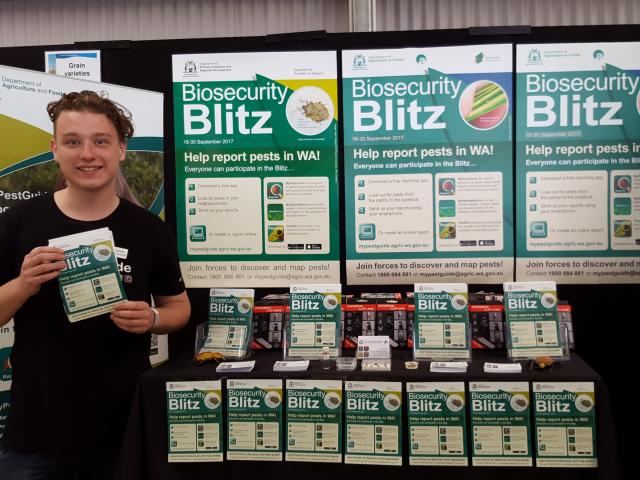
With the promise of warmer weather ahead, it’s time to head out into the garden or paddock with your smartphone and participate in the Biosecurity Blitz 2017.
The Department of Primary Industries and Regional Development is calling on rural communities to take part in its third annual Biosecurity Blitz - an event that encourages and supports community surveillance for pests and diseases using the MyPestGuide Reporter app.
Biosecurity Blitz 2017 will run from 18 – 30 September.
The Blitz is just one of numerous events the department has initiated to increase the uptake of the popular reporter app and encourage people to look for and report insects, weeds and signs of diseases for identification by department experts.
The MyPestGuide Reporter app has been downloaded almost 8000 times since it was launched in 2015.
This has resulted in more than 30 000 valuable surveillance reports to the department. These reports support Western Australia’s access to premium markets and claims of area freedom for certain pests and diseases.
Recent pest incursions in WA such as Tomato potato psyllid (TPP) and Dickeya dianthicola, highlight the importance of early detection.
To participate in Biosecurity Blitz 2017, all you need to do is download the free MyPestGuide Reporter app onto your smart device, have a look around your house, garden or local bushland for any insect, weed, animal or disease symptom and report back using the app or online tool.
During Biosecurity Blitz 2017, department staff will identify the organisms reported and collate the data online for the reporting community to view and share what other reporters are finding. A summary report on the Biosecurity Blitz findings will also be published on the website later in the year.
Biosecurity Blitz 2017 is part of the department’s Boosting Biosecurity Defences project supported by Royalties for Regions.
For more information contact Dr Rosalie McCauley, Project Manager, South Perth on +61 (0)8 9368 3787.
Market opportunities unveiled for WA premium foods
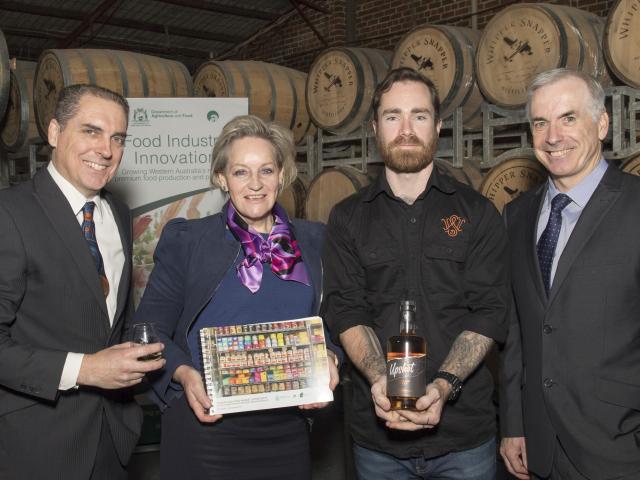
About 200 Western Australian premium food and beverage stakeholders have attended a series of events throughout the state to discuss the key findings of the recently released Premium Agrifood Market Opportunity (PMO) report.
The report was launched by Agriculture and Food Minister Alannah MacTiernan at Whipper Snapper Distillery in East Perth on 6 July.
Commissioned by the department’s Food Industry Innovation project and produced by Coriolis Research, the report uses market-trend research to identify new and emerging premium food and beverage products that add value to WA’s abundant raw materials.
It highlights export market value of up to $4 billion with a focus on domestic and Asian export markets, and analyses the capacity for WA businesses to capture this potential.
The report provides a useful guide for government and industry to work together to create new opportunities for the state. Food and beverage value-added products are a major contributor to the Australian economy, providing about 250 000 jobs and generating $26 billion in export value. The industry has increased by 30 per cent in the past seven years.
While there is an emerging value-added food and beverage sector driving innovation in WA, it is small, diverse and could benefit from targeted development.
Stakeholders who attended the Perth launch were enthusiastic to hear which products made the shortlist of 20 high-growth, high-value opportunities for WA – narrowed down from more than 500.
The key product opportunities are wide-ranging from organic beef and specialty breads to baby food, cheeses, cider, oat milk and alternative dairy.
WA premium food and beverage businesses provided products for grazing tables at the launch, showcasing the high calibre and diversity of our existing value-add products.
Event host and chief distiller James McKeown shared the Whipper Snapper business story and highlighted exciting growth opportunities for craft whiskey distilleries in the state.
Following the Perth launch, the PMO report was also profiled at events in six regional centres including Geraldton, Carnarvon, Bunbury, Manjimup, Northam and Albany.
Producers heard about product opportunities relevant to their region and presentations on other department reports including the Asian Market Success Target Market Opportunities report and Pathways to Competitiveness report.
The PMO report will influence Food Industry Innovation priorities and ensure the project team focuses on market demand and delivering tangible commercial outcomes.
Within the report, gap assessments highlight improvement in marketing, awareness activities and sales capabilities as key focus areas for the growth of WA’s premium food and beverage businesses.
The project will provide identified WA premium food and beverage businesses seeking growth, with access to targeted resources, knowledge, skills, and information about domestic and international market opportunities.
WA premium food producers will be offered a range of tools and support services to address their business needs and gaps such as road mapping, competitor analysis, branding and marketing training, and links to in-market officers and case managers.
The project aims to develop the full potential of WA food and beverage businesses that are adding value to raw products, and generating jobs and growth for regional communities and the State’s economy.
A full digital copy of the report is available for download at: http://www.agric.wa.gov.au/pmoreport
For more information email: foodindustryinnovation@agric.wa.gov.au
Events, grants and scholarships
Included below is a snapshot of some of the government-supported events, funding programs, grants and scholarships available in Western Australia.
Events
ABARES Regional Outlook Conference – Wednesday 20 September, Kununurra
Join others from around your region to hear the latest economic trends and agricultural commodity updates from ABARES speakers, as well as business innovation stories from local business people and producers.
Biosecurity Blitz 2017 - 18 to 30 September, State-wide
The Department of Primary Industries and Regional Development has announced the third annual Biosecurity Blitz - an event that encourages and supports community surveillance for pests and diseases using the MyPestGuide Reporter app.
Perth Royal Show - 23 to 30 September, Perth
Protecting our agriculture industries and planning our food for the future are the two key themes of the Department’s interactive display this year. Located in the Farm 2 Food exhibit, the display has a wealth of interesting information and interactive displays for both adults and children.
Planning the Peel Food Zone Community Workshop, Tuesday 10 October, Pinjarra
This community workshop aims to provide a forum for landholders and interested members of the local community to participate in the planning for the Peel Food Zone.
Planning the Peel Food Zone Community Workshop, Wednesday 11 October, Serpentine
This community workshop aims to provide a forum for landholders and interested members of the local community to participate in the planning for the Peel Food Zone.
Prices, patterns and profitability of feedlots Wednesday 20 September, South Perth
Keen to know more about starting up a commercial sheep feedlot? Not sure what profits can be made and what they depend on? Join Geoff Duddy for a presentation on sheep feedlotting where all of this will be discussed and more.
Succession: a business strategy - Wednesday 25 October, Walpole
The Department of Regional Development and Primary Industries is offering free business training workshops to primary producer and food processing businesses. These workshops assist businesses to develop strategies to manage risk and maximise opportunities for profit.
Sheep Technology Field Day - Tuesday 19 September, Northampton
Speakers from DPIRD will cover topics including sheep genetics, electronic identification (EiD), feeding sheep over summer, Lifetime Ewe Management groups. Equipment including sheep handlers and EID will also be on display.
Wrestling 2017 and Beyond - spring research event
The field day will include travelling to 3-4 DPIRD trial sites to discuss some topics we think are relevant to this year’s growing season. Some of these topics include sowing into last year’s furrow, management of wild radish and matching wheat varieties with time of sowing
Grants
Agricultural Trade and Market Access Cooperation (ATMAC) program
Grants are available for projects aimed at promoting cooperation in accessing international markets.
Community water supply program
The Community Water Supply Program (CWSP) provides grants of up to $100 000 for community water supply improvements in dryland agricultural areas receiving less than 600 mm average annual rainfall.
The Entrepreneurs’ Programme uses experienced Advisers and Facilitators, drawn from industry, to ensure businesses get the advice and support needed to improve their competitiveness, productivity and to seek growth opportunities.
Farm water supply planning scheme
Commercial broadacre farmer experiencing water shortages can apply for rebates to fund an audit and site inspection of farm water supply and improvements.
Farming Together (Farm Co-operatives and Collaboration Pilot Program) – is a $14 934 000 Federal Government initiative that aims to provide farmers with knowledge, skills and materials on collaborative ideas, co-operative structures and collective strategies.
Producer Innovation Fast-Track program
A new initiative developed by MLA Donor Company (MDC) to catalyse producer innovation. The program provides the expertise, co-funding and support to producers who are innovators, early adopters, AgTech entrepreneurs or future value chain leaders.
Provides grants of up to $20 000 for commercial pastoralists looking to develop alternative watering points to reduce grazing intensity around existing overgrazed and degraded water supplies.
Science and Innovation Award for Young People in Agriculture, Fisheries and Forestry
The Science Awards encourage young scientists, researchers and innovators with original projects that will contribute to the ongoing success and sustainability of Australia’s agricultural, fisheries and forestry industries. Applications close Friday 13 October.
Provides tailored advice to help your business to develop a better understanding of your customer’s needs and requirements, increase your supplier capability, and improve your access to new and existing markets.
Scholarships
Grains R&D Postgraduate Scholarships
Scholarships are available for four years and are awarded on the basis of academic excellence, the topic of the proposed research program and the likelihood of the applicant’s on-going involvement with the grains industry. Applications close 31 October.
Western Australian sheep industry university scholarship program
The WA sheep industry scholarship program is designed to support and encourage individuals who wish to pursue further study by addressing key industry questions relevant to the sheep industry supply chain in Western Australia.

